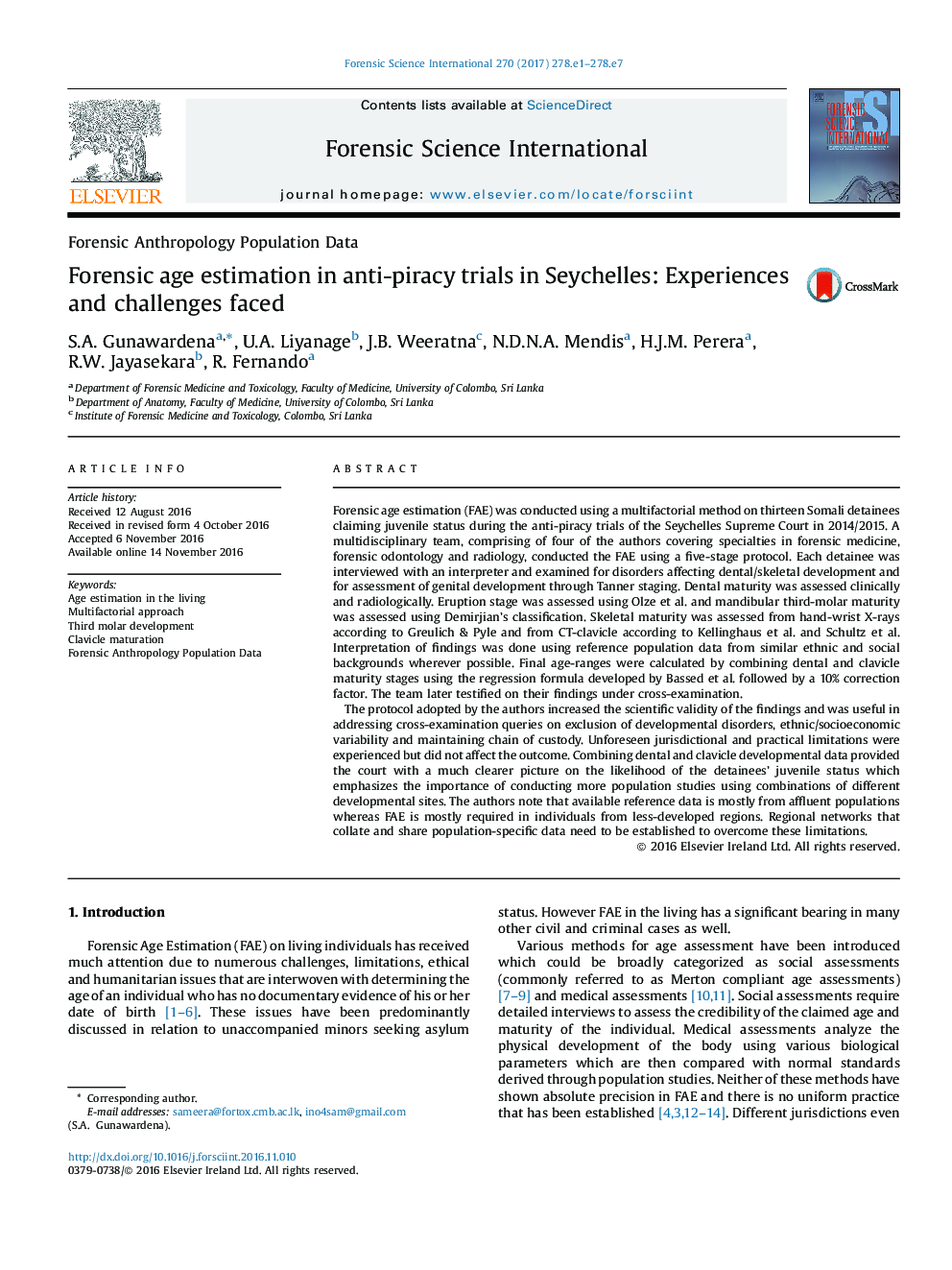| کد مقاله | کد نشریه | سال انتشار | مقاله انگلیسی | نسخه تمام متن |
|---|---|---|---|---|
| 6462581 | 1421980 | 2017 | 7 صفحه PDF | دانلود رایگان |
- There is a need for uniformity in multifactorial FAE protocols.
- Combined assessments of different developmental sites provide narrower age ranges.
- Reference data are needed from lesser developed regions.
- Regional repositories of population studies can overcome shortage of data.
- Unforeseen jurisdictional limitations should be considered in FAE protocols.
Forensic age estimation (FAE) was conducted using a multifactorial method on thirteen Somali detainees claiming juvenile status during the anti-piracy trials of the Seychelles Supreme Court in 2014/2015. A multidisciplinary team, comprising of four of the authors covering specialties in forensic medicine, forensic odontology and radiology, conducted the FAE using a five-stage protocol. Each detainee was interviewed with an interpreter and examined for disorders affecting dental/skeletal development and for assessment of genital development through Tanner staging. Dental maturity was assessed clinically and radiologically. Eruption stage was assessed using Olze et al. and mandibular third-molar maturity was assessed using Demirjian's classification. Skeletal maturity was assessed from hand-wrist X-rays according to Greulich & Pyle and from CT-clavicle according to Kellinghaus et al. and Schultz et al. Interpretation of findings was done using reference population data from similar ethnic and social backgrounds wherever possible. Final age-ranges were calculated by combining dental and clavicle maturity stages using the regression formula developed by Bassed et al. followed by a 10% correction factor. The team later testified on their findings under cross-examination.The protocol adopted by the authors increased the scientific validity of the findings and was useful in addressing cross-examination queries on exclusion of developmental disorders, ethnic/socioeconomic variability and maintaining chain of custody. Unforeseen jurisdictional and practical limitations were experienced but did not affect the outcome. Combining dental and clavicle developmental data provided the court with a much clearer picture on the likelihood of the detainees' juvenile status which emphasizes the importance of conducting more population studies using combinations of different developmental sites. The authors note that available reference data is mostly from affluent populations whereas FAE is mostly required in individuals from less-developed regions. Regional networks that collate and share population-specific data need to be established to overcome these limitations.
Journal: Forensic Science International - Volume 270, January 2017, Pages 278.e1-278.e7
